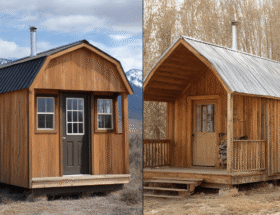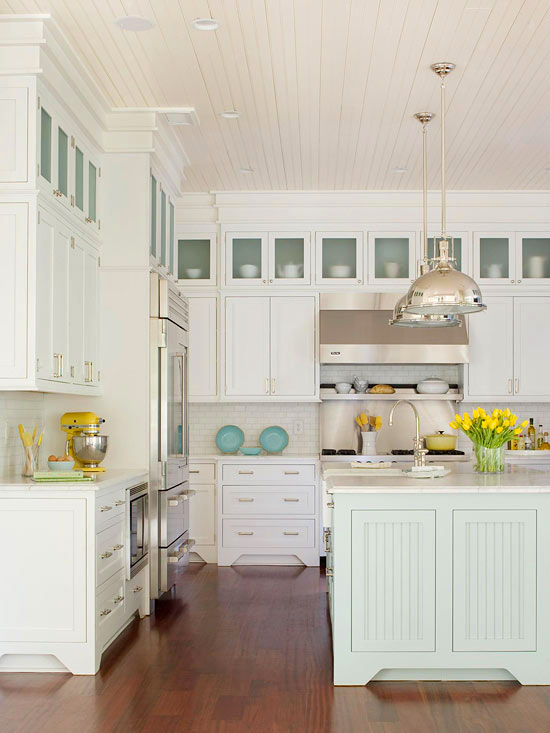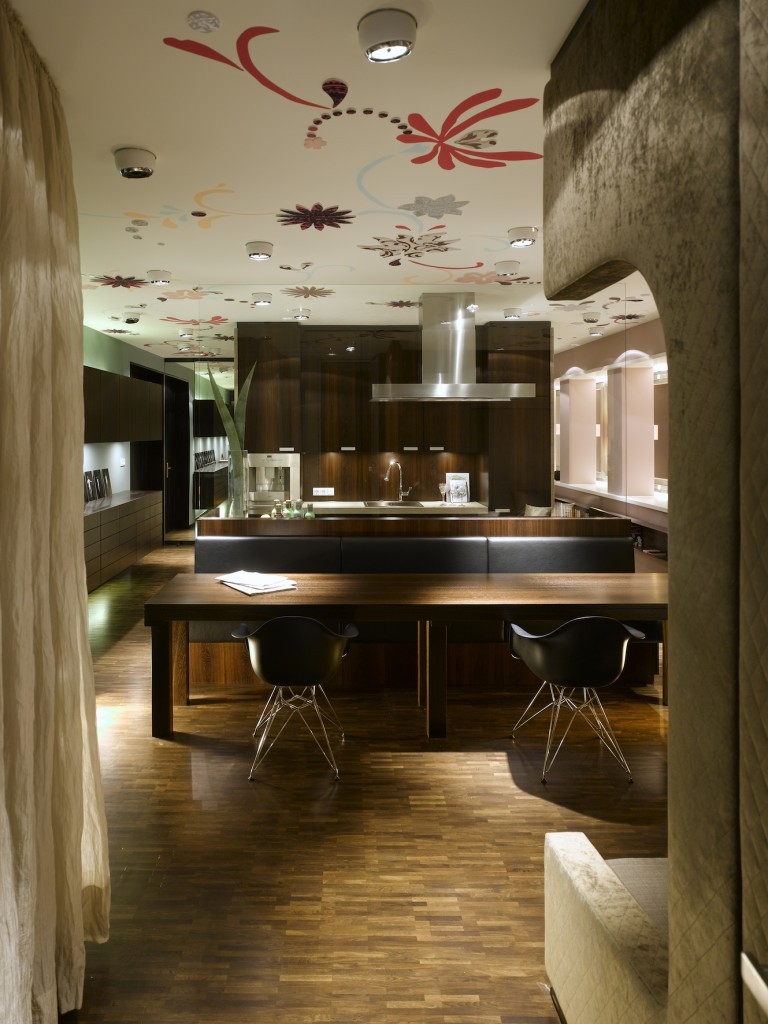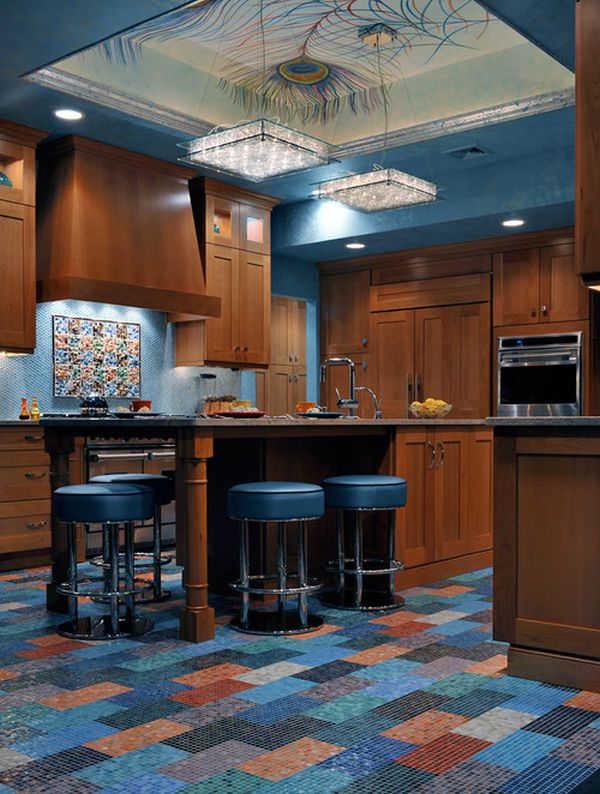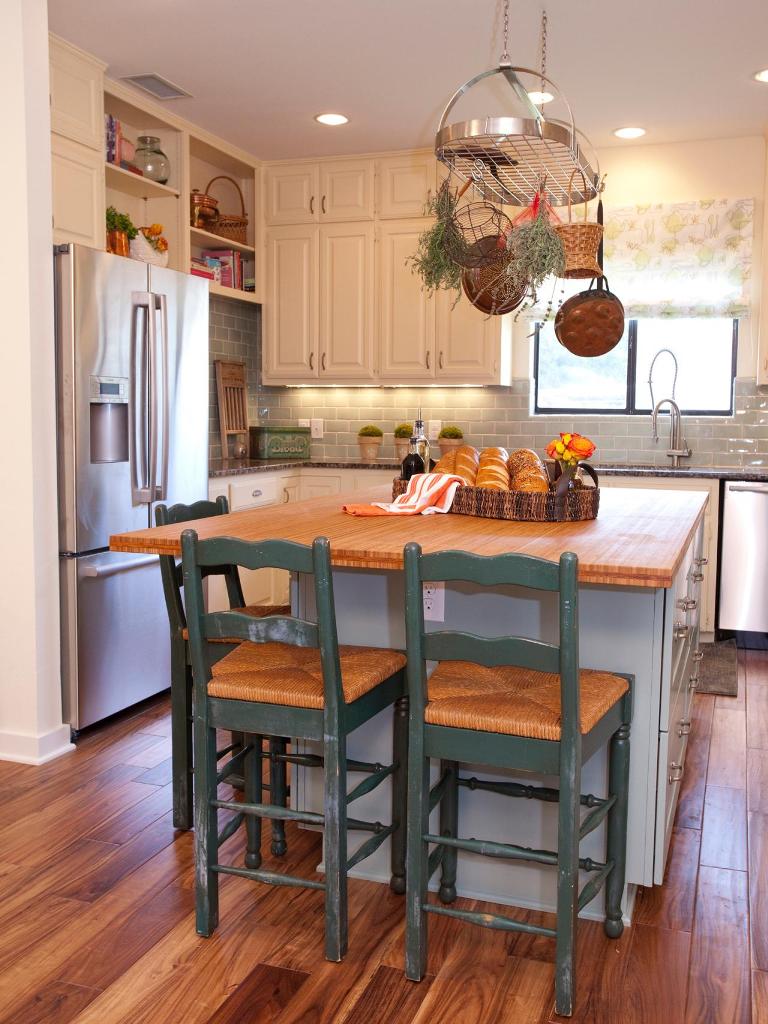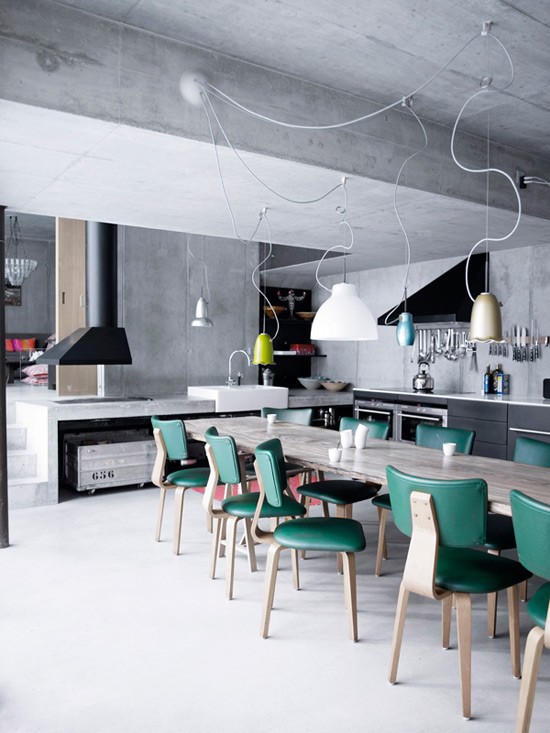Small spaces also have a lot of potential, and the colors we choose to paint them are essential for the final effect. But, before choosing one, what is the effect you want to achieve? You may be interested in a light and bright, warm and cozy, or slightly dramatic environment. In addition to giving you some tricks, we suggest different colors for small rooms with which you can create the atmosphere you want.
Color tips for small rooms

1- White for small spaces

It is often said that white is the perfect color to paint small spaces because it visually expands the spaces. Is it essential that the space you want to paint looks bigger? If the answer is yes, go to white or very light colors for your walls. On the other hand, if that factor is not the most important, and you want to create a friendly space without making it look more prominent, the color palette will be expanded to more shades.
2- Paint your small kitchen gray

This medium gray isn’t a bright color, but its cool undertone and natural light make the space feel less oppressive. According to color theory, warm colors “bring” surfaces together, while cool colors make them recede visually, like this gray. The result will be just as good with a neutral palette for your kitchen and color-coordinated objects.
3- Small room in pale pink

The rule of cool colors that we have mentioned can serve as a guide, but we can also skip it altogether. If you prefer warm colors, we recommend using a light tone and one that does not tend too much to yellow for your small rooms. In this room, a pale pink (Farrow and Ball’s Peignoir) is used with white trim to break up the warm color and gray textiles. Knowing the rules is essential, but our style should always prevail!
4- Paint your small rooms in turquoise
Bold colors can energize and expand a small space like this kitchen. When you choose a striking color, let it be because you like it a lot. Never choose a bright color just because it’s trendy. Keep in mind that fashions pass, and these types of colors are more tiring than other neutrals. The idea is to paint your house only when you need it or when you feel like it… Choose a color that you love!
5- Dark blue painted walls in small rooms
Dark colors for small rooms? Of course! You can incorporate, for example, a dark blue to your walls if you keep a simple color palette. The navy blue wall makes a stunning backdrop for the hanging planters in this small living room. As you can see, the ceiling and the interior carpentry are kept white to create a lighter ensemble.
6- Small black painted bedroom

Dark colors make a room seem more intimate. Both in the bedroom and the bathroom, you will achieve a theatrical and cozy effect if you dare with black. The trick to painting the walls of a small room black and not being overwhelming is to combine it with white strategically. Thanks to the contrast, the black paint will add a lot of depth and make the space painted in another color look even brighter.
7- Bold Colors

Muted colors can make a room seem even more minor. If you like bold colors, look for bright, attention-grabbing hues to expand the space.
8- Paint Unexpected Places

Add color accents in unexpected places. Inside a bookcase, a window frame or a painted radiator will add interest and depth to your room.
9- Hallways

If you have a hallway, you can paint it in darker colors than the rooms so that they look larger by comparison.
10- Monochromatic color

If you choose a dark color, consider going all out and using it throughout the room, as a monochromatic color scheme can make a space look larger, even if the color is dark.
11- Ceiling and walls

To create a continuous space, paint the ceiling and walls the same color. If you want to add some height to the space, look for a lighter shade of color for the ceiling.
12- Architectural details

Small spaces can be very dull if they do not have interesting architectural details. Add interest by creating an accent wall or painting initially.
13- Light dark combination

One way to make a small room appear larger is to use darker colors below eye level and lighter colors above.
14- Dark and White

In small and elongated rooms or corridors, use a dark color on the narrowest walls and keep the others white. The dark color will give a feeling of proximity and minimize the “tunnel effect.”
15- Small Doses and texture

Patterns make rooms look busier, so if you decide to include them, try to do it in small doses and add texture in other ways.
16- Choose Proper Furniture

As important as the color is the furniture. Always choose your furniture with space in mind and place it properly to avoid cluttering the little space available.







